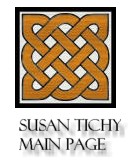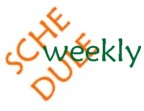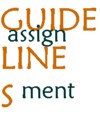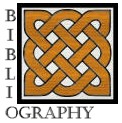ENG
LISH
660:
002
Modernist Women Poets:
Mina Loy, Marianne Moore, Lorine Niedecker
SPRING 2005 / SUSAN TICHY / THURSDAYS 7:20-10:00 / EAST BUILDING 134
Marianne
RGE
MAS
ON
UNI
VER
SITY
week 3: Feb 10: Assemblage & Collage
We will continue this week to examine Moore’s poems in relation to the visual arts. Our discussion will begin with Leavell’s triangular model of “the threefold tension of assemblage,” particularly in relation to Moore’s portrait and landscape poems and to the different kinds of quotation used in her early poems (i.e. degree of relationship between quotes and the poem’s “subject”). As we move through discussion of the poems, we'll use that model as well as Leonard Diepeveen’s ideas on the making and reading of "quoting poems." We’ll wind up with a discussion of “Marriage.” The four assigned passages of Moore’s prose (plus the shorter quotations) were selected to provide a sample of the aesthetic values she was seeking (in other poets and in her own work), a comment on the anthologizing spirit, and a defense of “primitivism” in modern poetry and art.
REQUIRED READING:
Poems of Marianne Moore:
Little Magazines 195-1919: To a Chameleon 102, Pedantic Literalist 105, In This Age of Hard Trying... 108, The Fish 127, In the Days of Prismatic Color 136,
The Dial Years 1920-1925: England 141, New York 146, The Labors of Hercules 147, People's Surroundings 149, The Past Is the Present, When I Buy Pictures 144, A Grave 145, Novices 154, Marriage 155, Silence 163
Lyrics & Sequences 1926-1940: No Swan So Fine 189
Photocopy handed out in class:
Linda Leavell: Excerpt from “Portraits and Miscellanies.”
On Line Reading:
Instructor's Notes: Quotes from Moore's prose
Notes from Leonard Diepeveen's Changing Voices
Reading at the JC Reserve Desk:
Marianne Moore: from her Complete Prose:
Review of Kora in
Hell, 1921, p 56
Review of Hymen, 1923, p 79
Untitled comment, p 182, beginning “Academic feeling...”, 1927
Page 191, beginning “The younger American writers...”, 1927
Review of Hymen, 1923, p 79
Untitled comment, p 182, beginning “Academic feeling...”, 1927
Page 191, beginning “The younger American writers...”, 1927
RECOMMENDED READING
1915: The Cultural Moment:
Review “Alfred Stieglitz” in “The New Art”




